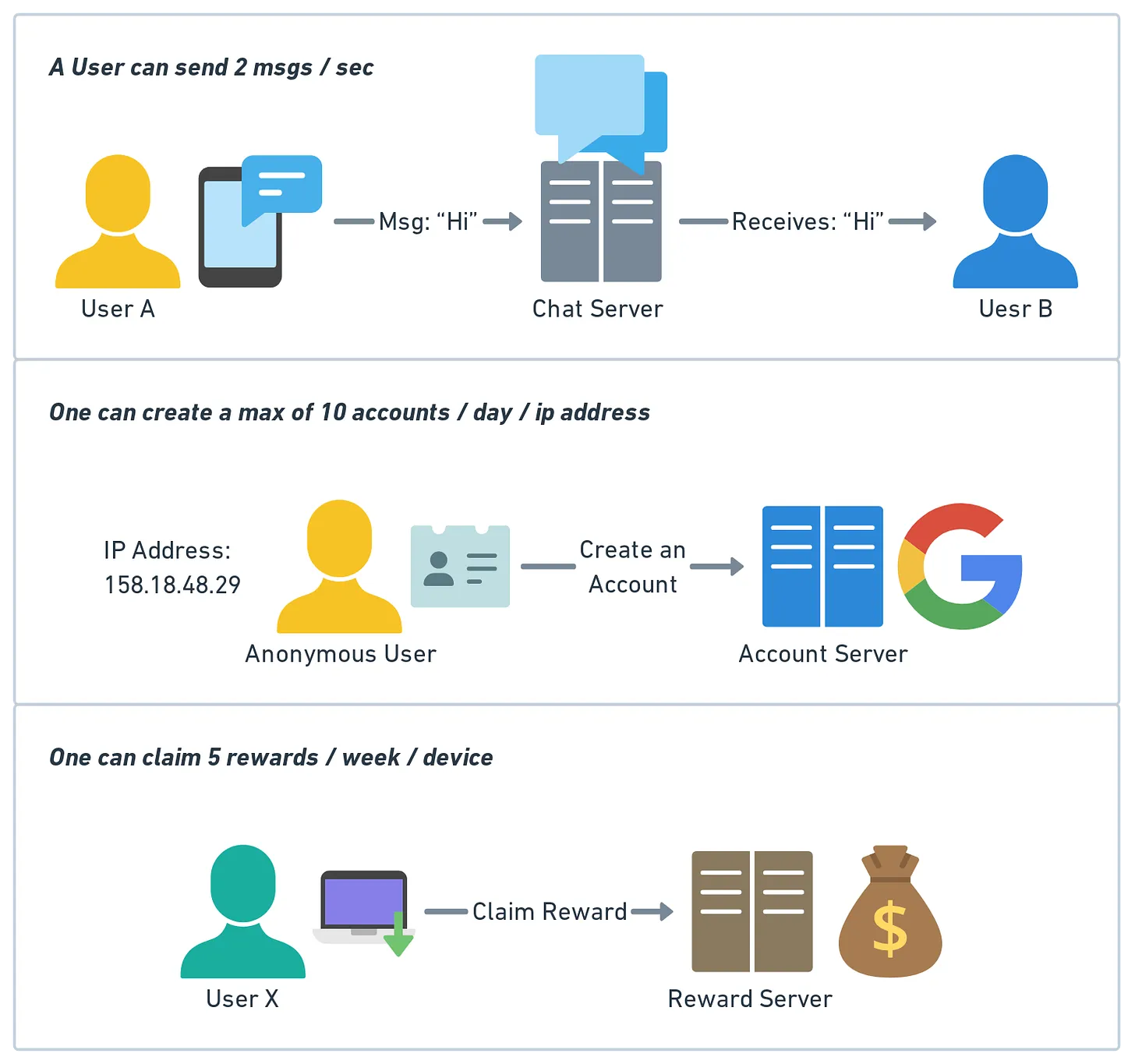-
Notifications
You must be signed in to change notification settings - Fork 0
New issue
Have a question about this project? Sign up for a free GitHub account to open an issue and contact its maintainers and the community.
By clicking “Sign up for GitHub”, you agree to our terms of service and privacy statement. We’ll occasionally send you account related emails.
Already on GitHub? Sign in to your account
[ByteByteGo Daily] Rate Limiting Fundamentals #145
Comments
Rate Limiting Definition and ExamplesRate limiting controls the rate at which users or services can access a resources, like an API, a service, or a network. It plays a critical role in protecting system resources and ensuring fair use among all users. When the rate of requests exceeds the threshold defined by the rate limiter, the requests are throttled or blocked. Some real world examples can be as following: (Please notice there is a difference on throttling and blocking) |
Benefits of Rate LimitingRate limiting is an integral part of modern large-scale applications.
|
Applications of Rate LimitingThe applications of rate limiting can be applied at
|
Core Concepts of Rate LimitingMost rate limiting implementations share three core concepts. They are the
After surpassing the rate limit, the action (limiting response) can be three catetgories
|
Common Rate Limiting AlgorithmsThis article introduced algorithms
The algorithms explaination content are unavailable for unpaid user ): |




Overview
This is a note extracted from Rate Limiting Fundamentals, By Alex Xu.
Reference:
The text was updated successfully, but these errors were encountered: